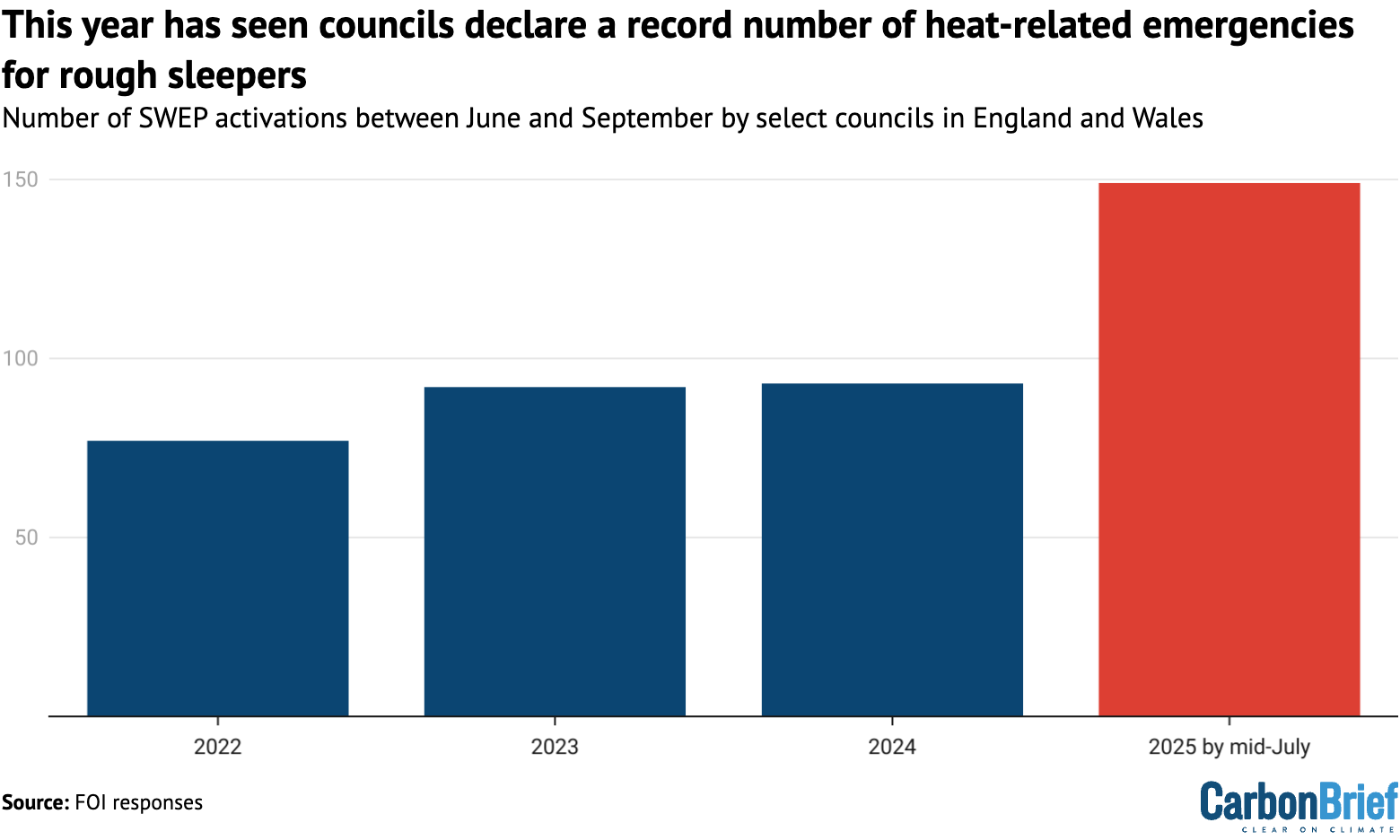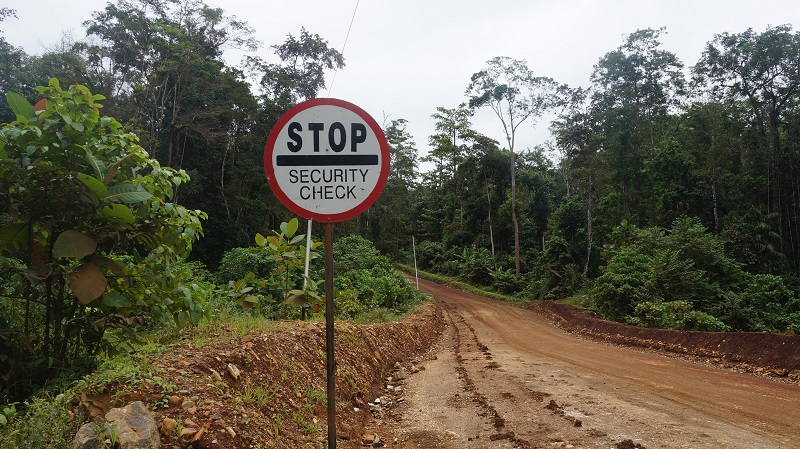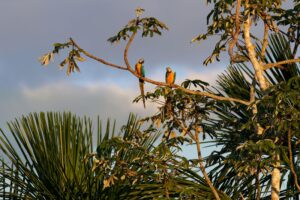A record number of heat-related “emergencies” have been triggered by councils this year to help rough sleepers in England and Wales, Carbon Brief analysis reveals.
As climate change drives more heat extremes, there is a growing recognition that homeless people face a higher risk of illness and even death when temperatures soar.
This summer has been the hottest on record in the UK, with official warnings about heat-related health threats issued across every part of England and Wales.
The main tool councils have to help people sleeping rough during dangerously hot periods is the “severe weather emergency protocol” (SWEP).
Freedom-of-information (FOI) requests submitted by Carbon Brief to 93 local authorities across England and Wales with significant rough-sleeper populations reveal that SWEP use has surged this year.
Many councils have used the protocol to provide water, sunscreen and “cool spaces” for rough sleepers.
However, at least 20 councils said they have never triggered a SWEP during the summer months and others failed to provide any information when asked.
Dangerous heat
Climate change is increasing the severity of dangerously hot weather in the UK and these conditions harm certain groups more than others.
People sleeping rough are both more exposed to heat due to their living conditions and more likely to experience heat-related illness, due to underlying health conditions and other issues.
Councils shoulder much of the responsibility for helping homeless people in England – the part of the UK that faces the most extreme heat – as well as in Wales.
The main mechanism councils have to deal with weather extremes is the SWEP, which can involve giving emergency shelter to rough sleepers, among other things. There is no legal obligation to use SWEPs, meaning their implementation is not consistent or universal.
SWEPs have traditionally been a response to cold weather, but there has been growing awareness in the UK of the risk posed by heat, particularly since the extreme temperatures of summer 2022.
Charities and researchers have highlighted this issue and argued for hot-weather use of SWEPs as a necessary precaution to protect rough sleepers during heatwaves. In 2023, the UK government issued its first guidance for helping homeless people during hot weather.
Record SWEP
To investigate how local authorities are helping rough sleepers deal with heat extremes, Carbon Brief sent FOI requests to 90 councils in England and three in Wales.
This covers all areas with a sizable rough-sleeper population (see: Methodology). It also includes 33 London boroughs, which together are home to a quarter of the homeless population in England and Wales, plus the Greater London Authority.
Carbon Brief asked whether councils had been using SWEPs, how often and on which dates, during the summer months from 2022 to 2025.
This period saw the UK Health Security Agency (UKHSA) announce around 40 “heat-health alerts” across different parts of England, indicating temperatures that threaten public health.
The council FOI results reveal a surge in SWEP usage in 2025, as the UK faced its hottest ever summer. Just half way through summer in mid-July, councils had already collectively triggered SWEPs at least 149 times – up from 93 in the entirety of summer in 2024, as the chart below shows.

Not all SWEP activations are the same, with some councils using it for single days and others triggering it for longer stretches.
Nevertheless, roughly the same trend emerges when looking at the total number of days that councils have activated SWEPs since 2022. By mid-July, 2025 had already seen the longest period of SWEP activation, as the chart below shows.

The surge in SWEP activation mirrors both the record UK heat in 2025 and the growing salience of this issue, with more councils making use of it during the summer months. By July, 48 councils had triggered heat-related use of SWEPs this year, compared to just 36 two years earlier.
The increase may also reflect the numbers of people sleeping rough, which have surged in England over this time period, while remaining relatively steady in Wales.
‘Inadequate’ assistance
Previous analysis in 2023 by the Museum of Homelessness, a London-based organisation that researches homelessness, concluded that SWEPs were “inconsistently applied” and “inadequate”. It highlighted particular shortcomings in heat-related use of SWEPs.
Despite the surge in SWEP use this year, the data provided to Carbon Brief suggests that some councils are still not responding urgently to periods of extreme heat.
Of the 93 councils that Carbon Brief requested data from, 59 – or 63% – confirmed that they had activated SWEPs at least once during the summer months between 2022 and 2025, as shown in the figure below.
Common provisions resulting from this activation included the distribution of sunscreen, bottles of water and sun hats, as well as making “cool spaces” available and providing extra welfare checks. Most councils did not mention providing emergency accommodation.

Among the remainder, 14 councils either did not hold the data requested or never responded.
This leaves 20 councils that stated they did not trigger SWEPs at all during summers over this period, including those in Manchester, Nottingham and Cornwall.
All of the regions covered by these local authorities were issued with heat-health alerts in 2025.
Some of these councils said they were mindful of hot weather and mentioned other actions taken during these periods, some of which overlapped with SWEP responses.
Other councils, including Plymouth, Hastings and the London boroughs of Waltham Forest and Barking and Dagenham, did not mention any provisions for rough sleepers during periods of extreme heat.
Matthew Turtle, co-director of the Museum of Homelessness, tells Carbon Brief:
“These findings, like our own research, show that many councils opt not to help people who need it the most when there is extreme weather…This is not just smaller councils, but includes major towns and cities across the UK, who simply have no emergency protocol in place to protect people who are homeless during spells of extreme weather.”
Turtle argues that the use of SWEP should be made a legal duty in order to guarantee protection from extreme weather for those sleeping rough.
Researchers have argued that extreme heat should be taken more seriously by authorities when dealing with rough sleepers, with one study finding that homeless people in London were 35% more likely to be hospitalised at 25C compared to 6C. The authors suggest this is because people are better prepared for the threat of cold weather.
Dr Becky Ward, a researcher at the University of Southampton who is investigating how climate change interacts with homelessness, tells Carbon Brief that “the conversation is changing and awareness is building” about this issue. She adds:
“There’s a more fundamental need to improve the provision of shelter for people experiencing homelessness, alongside providing psychological support to address the causes and maintaining factors for people who are rough sleeping.”
Methodology
Carbon Brief obtained the list of 93 local authorities with significant rough-sleeping populations in England and Wales from the Museum of Homelessness. The criteria for this included being in one of the top 50 most populated cities in the UK, having a rough sleeping count of at least 15 people and/or being a London borough. These councils make up 28% of the 317 local authorities in England and 14% of those in Wales.
FOI requests were sent to these councils, asking for details of when SWEPs were activated and for how long over the summers of 2022-2025, as well as information about what activities this involved. (These requests were sent in mid-July, meaning data for 2025 is only for half the summer period.)
Carbon Brief asked for SWEP activations between June and September, mirroring the timescale used by the UKHSA and the Met Office for their heat-health alert service.
The results demonstrate the ad-hoc nature of SWEP use, with different councils using it in different ways and some relying on third-party organisations to coordinate their responses. Nevertheless, the combined results capture overall trends.
Some 20 councils said they did not record SWEP activations, or only kept partial records. Another five never responded to Carbon Brief’s FOI request.
In this article, Carbon Brief has used the term “rough sleeper” when referring to people sleeping outside or in other spaces not designed for people to stay. When referring to studies or datasets that cover the wider homeless population, the term “homeless” has been used.
The post Revealed: Use of heat ‘emergencies’ for rough sleepers hits record in England and Wales appeared first on Carbon Brief.
Revealed: Use of heat ‘emergencies’ for rough sleepers hits record in England and Wales
Climate Change
Cranberry Farmers Consider Turning Bogs into Wetlands in Massachusetts As Temperatures Rise
The state is helping to transform cranberry bogs to into habitats that broaden conservation and climate change resilience.
What happens when a region no longer has the ideal climate for its star crop?
Cranberry Farmers Consider Turning Bogs into Wetlands in Massachusetts As Temperatures Rise
Climate Change
As Lake Powell Recedes, Beavers are Building Back
The decline of the reservoir threatens the water and electricity for 40 million people, but is resurfacing vast canyons and lush riversides that the aquatic rodents engineer into robust habitats for many species.
To hike up this narrow canyon, Eric Balken pushed through dense thickets of green. In the shadow of towering red rock walls, his route along a muddy creekbed was lined with bushes and the subtle hum of life. The canyon echoed the buzzing and chirping of bugs and toads. But not long ago, this exact spot was at the bottom of a reservoir.
Climate Change
COP30 could confront “glaring gap” in clean energy agenda: mining
Diplomats preparing for COP30 in the Brazilian city of Belém next month have been discussing an emerging issue that could feature for the first time at a UN climate summit: the global rush for energy transition minerals.
Metals such as copper, cobalt, lithium, nickel and graphite are vital for manufacturing clean energy transition technologies such as solar panels, wind turbines, batteries and electric vehicles – creating both new opportunities and risks for resource-rich countries.
Soaring demand for minerals – which are also used in the construction, digital and military sectors – provides an opportunity to spur economic development if mining is responsible and producing countries can turn their resources into high-value products.
But increased mining activity has fuelled environmental destruction, deforestation and conflict with communities, from Indonesia – which is opening new coal plants to power its nickel industry – to Zambia and Chile.
In preparatory talks over the past couple of months, developing countries with extensive mineral reserves, notably Latin American and African states, have warned that mining could become the Achilles heel of a just energy transition unless environmental and social safeguards are put in place to ensure the costs and benefits are shared fairly.
Diplomats have discussed the impacts of mining in negotiations on the social and economic implications of climate action, known as “response measures”.
They also raised the issue during talks to define the scope of a work stream to ensure that the transition from fossil fuels to clean energy is fair to workers, protects nature and support economic development, called the Just Transition Work Programme.
Civil society push for COP to tackle transition minerals
Brazil’s COP30 presidency has made an agreement with “concrete outcomes” on a just transition framework a key priority of the summit in Belém.
Separately, the government has spoken about the need for energy transition mineral production to respect human rights and promote sustainable development.
“In its interventions across international forums, Brazil has expressed support for the inclusion of principles that promote transparency, address illicit activities and corruption, encourage value addition in developing countries, and uphold environmental protection and human rights in the context of critical minerals production,” a COP30 spokesperson told Climate Home News.
The inclusion of energy transition minerals in COP30 decisions will require consensus among all countries but observers are cautiously optimistic.
Colombia proposes expert group to advance talks on minerals agreement
“The stars do seem to be aligning for COP30 to be the first to address the role of transition minerals governance in climate action but it’s still not a given,” said Antonio Hill, an advisor on the Natural Resource Governance Institute’s just transitions advocacy work.
“If achieved, it would address a glaring gap in the current global climate and energy transition agenda,” he added.
More than 200 civil society groups have signed an open letter urging countries to address energy transition minerals at COP30.
They called on them to welcome principles and recommendations of a UN panel on establishing transparent, sustainable and equitable mineral supply chains and to strengthen mineral governance.
A “timely and necessary” discussion
In a submission ahead of talks on the implications of climate measures last month, a coalition of 134 developing countries – known as the G77 and China – called for a “dedicated dialogue” on energy transition minerals.
It described it as “both timely and necessary” to enable countries to consider how growing mineral demand relates to their development priorities and climate plans.
The current dynamic “presents a serious risk of entrenching unsustainable development trajectories, undermining efforts toward industrial diversification, and jeopardising the prospects of a truly just transition for developing countries”, it said.
More than half of energy transition mineral reserves are estimated to be located on or near Indigenous land and a large majority of mines are located in biodiversity hotspots. Indigenous peoples are widely acknowledged to play a key role in preserving tropical forests that act as some of the world’s most important carbon sinks.

The issue was also raised during talks on defining a just energy transition framework.
The Independent Association of Latin America and the Caribbean (AILAC), which includes Colombia, Chile and Peru, warned that deforestation and land use changes caused by mineral extraction could undermine climate action and affect people’s rights to a healthy environment.
“A just transition approach could offer unique opportunities towards fairness and equity in the mining industry” and contribute to local development, the group said.
Colombia, which is proposing that countries discuss options for a binding agreement on minerals at the UN Environment Assembly in December, went further and called for the designation of “no-go areas” for mining.
No-go mining zones
Colombia’s demands are echoed by Indigenous groups.
Bryan Bixcul is from the Maya-Tz’utujil Indigenous group in Guatemala and serves as the global coordinator of the Securing Indigenous Peoples’ Rights in the Green Economy (SIRGE) coalition. He told Climate Home the Just Transition Work Programme will fail to be a tool for justice if it fails to directly address the harms caused by mining.
Efforts to green lithium extraction face scrutiny over water use
Key to SIRGE’s demand is for the text to make explicit references to the rights of Indigenous peoples, including those in voluntary isolation.
Bixcul said the text should include an obligation to establish “no-go” or exclusion zones on and around the land of the world’s remaining uncontacted Indigenous groups, which cannot give their consent to mining projects close to their lands. This, he said, violates the principle of no contact.
Protecting uncontacted Indigenous peoples
Videos have emerged showing members of an uncontacted Indigenous group warning outsiders away and begging for food on a site where forest was being cleared for nickel mining on Halmahera island in Indonesia.
NGO Survival International warned that the uncontacted Hongana Manyawa people, who live on the island, faced “a threat of genocide” because of nickel mining used to make batteries for electric vehicles.
In September, Norway’s government pension fund divested from French miner Eramet, which operates a large mine on the island, citing “unacceptable risk” of human rights violations, including forced contact. Eramet denied the presence of uncontacted groups in or near its concession.
“If countries don’t take a stance to protect the rights of Indigenous peoples in voluntary isolation, they will fail human rights, not just Indigenous people’s rights,” said Bixcul.
Brazil, which has promised the largest Indigenous participation in COP history in Belém, has called on countries to protect the demarcation of Indigenous lands as a key policy tool to address the climate crisis.
The post COP30 could confront “glaring gap” in clean energy agenda: mining appeared first on Climate Home News.
COP30 could confront “glaring gap” in clean energy agenda: mining
-
Climate Change2 years ago
Spanish-language misinformation on renewable energy spreads online, report shows
-
Climate Change3 months ago
Guest post: Why China is still building new coal – and when it might stop
-
Climate Change Videos2 years ago
The toxic gas flares fuelling Nigeria’s climate change – BBC News
-

 Greenhouse Gases1 year ago
Greenhouse Gases1 year ago嘉宾来稿:满足中国增长的用电需求 光伏加储能“比新建煤电更实惠”
-
Greenhouse Gases3 months ago
Guest post: Why China is still building new coal – and when it might stop
-

 Climate Change1 year ago
Climate Change1 year ago嘉宾来稿:满足中国增长的用电需求 光伏加储能“比新建煤电更实惠”
-

 Carbon Footprint2 years ago
Carbon Footprint2 years agoUS SEC’s Climate Disclosure Rules Spur Renewed Interest in Carbon Credits
-
Renewable Energy4 months ago
US Grid Strain, Possible Allete Sale










